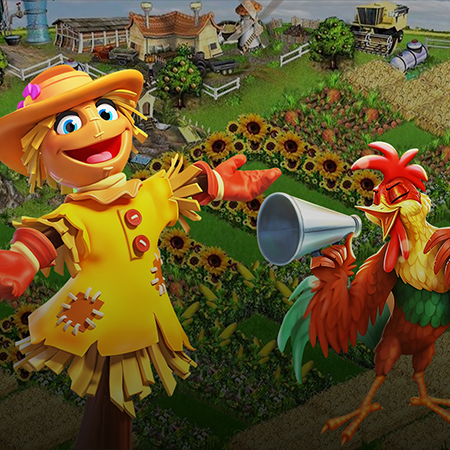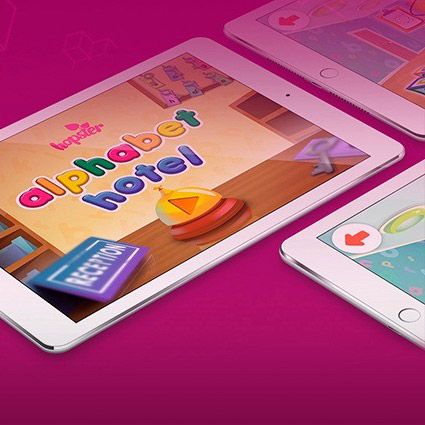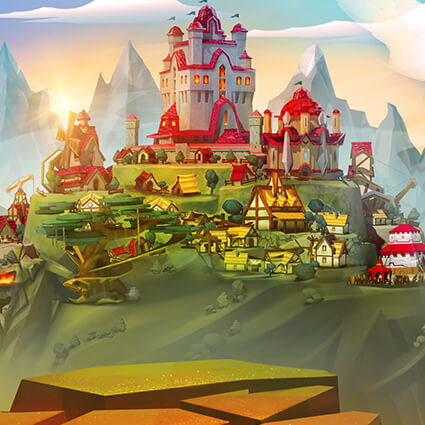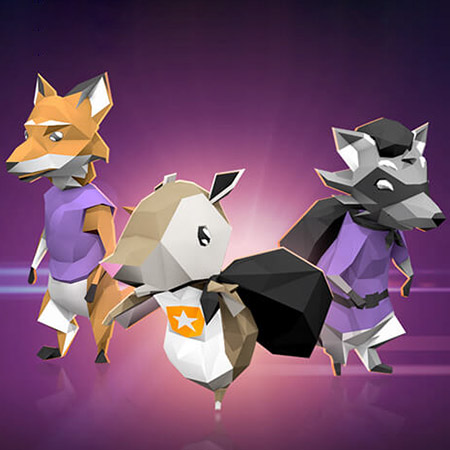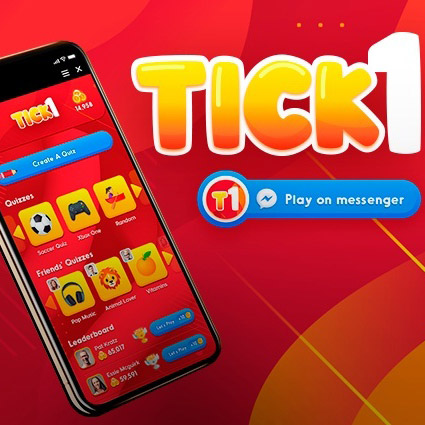In the high-stakes world of video games, where every title competes for players' attention, being a successful game development company requires more than impressive graphics and innovative gameplay mechanics. One key ingredient that often differentiates between a game that fades into obscurity and one that becomes a cult classic is the power of storytelling.
Storytelling in game development is not just about spinning a captivating tale. It's about immersing players in a world that lives and breathes, populated with characters they come to know, empathize with, or even despise. It's about weaving narratives that enhance gameplay mechanics, hold player engagement, and drive emotional connections. A well-crafted story can turn a good game into an unforgettable experience, and a memorable experience is what players seek and cherish.
As a business owner or a game developer, understanding and leveraging the role and principles of storytelling can set your game apart, creating a unique selling proposition that resonates deeply with your audience. This blog post aims to guide you through the intricacies of storytelling in game development, revealing how a strong narrative can enhance player engagement and positively impact the business side of game development.
Understanding the Role of Storytelling in Games
The evolution of storytelling in video games goes beyond mere entertainment. It is a powerful tool that can significantly affect how players perceive and interact with the game. To appreciate its importance, let's delve into how narratives play a crucial role in enhancing player engagement, driving emotional connections, and facilitating gameplay mechanics.
Enhancing player engagement through visual storytelling in games
Captivating intros. The narrative’s first few minutes can significantly influence a player’s decision to continue playing. A captivating intro grabs their attention, drawing them into the game world.
Progressive plot. A well-crafted story unfolds progressively, maintaining suspense and curiosity. This keeps players hooked, always coming back to find out what happens next.
Rewarding achievements. Story-based rewards or milestones provide a sense of accomplishment and motivate players to continue their game journey.
Driving emotional connection with a juicy backstory
Relatable characters. By creating characters with depth and relatable traits, stories can elicit strong emotional responses, fostering a deeper connection between the player and the game.
Immersive environments. The game's setting, described vividly through the narrative, can evoke feelings of wonder, fear, or excitement, further immersing players emotionally.
Engaging conflicts. Challenges or conflicts in the narrative stir emotions, making the gameplay more engaging and stimulating for players.
Facilitating gameplay mechanics
Narrative-driven objectives. Story elements often define game objectives, giving context to players’ actions and making them meaningful within the game's universe.
Tutorial storytelling. Narratives can be used to introduce game mechanics in a non-intrusive way, making the learning curve smoother for players.
Plot-based progression. Storyline can dictate the game's pace, offering a logical progression of complexity and difficulty, thereby supporting gameplay mechanics.
Fundamental Principles of Storytelling in Video Games
In order to craft compelling narratives within games, it's vital to grasp the core principles of storytelling in game development as well as build a cohesive Game Design Document. These principles govern the way we embed stories into gameplay, enhancing player engagement and immersion. Join us as we explore the cornerstones of effective game narratives, namely world-building, character development, the balance between story and gameplay, and the role of player agency.
1. Building a rich world using game storytelling principles
World-building is a cornerstone of game storytelling, pivotal in shaping the overall narrative and gameplay experience. It provides the setting wherein the game's action and drama unfold, and it can greatly enhance a game's immersiveness and sense of realism.
Setting the stage. The game world sets the stage for the narrative. It provides the physical and cultural context within which characters live and events take place. This could range from a dystopian future city to a mystical fantasy realm. The environment is not just a backdrop; it plays a key role in driving the story and defining the gameplay.
World rules. Every game world has its own rules and principles. They dictate everything from how characters interact with each other to how they interact with the game world itself. This creates consistency and believability within the game universe.
Environmental storytelling. Even subtle elements, such as architecture, weather, or background sounds, can contribute to game storytelling. They provide additional depth to the narrative, fostering a more engaging and immersive gaming experience.
2. Character development
Compelling characters are at the heart of any engaging story, and video games are no exception. Characters serve as the bridge between players and the game world, driving the narrative and eliciting emotional responses.
Character arc. Well-developed characters have their own arcs – they grow, learn, and change as the game progresses. This development creates a sense of dynamism and makes characters more relatable, encouraging players to invest emotionally in their journeys.
Motivations and conflicts. Understanding a character's motivations and conflicts is crucial. These elements not only drive the plot forward but also provide context for the character's actions and decisions, making the gameplay more engaging.
Player-character connection. When players can see elements of themselves in the characters, or when they understand and empathize with the character's struggles and triumphs, they form a deep connection. This connection enhances the overall gaming experience, making it more personal and immersive.
3. Balance between story and gameplay
A critical challenge in game development is striking the right balance between a compelling narrative and enjoyable gameplay. While both elements are essential, they must complement rather than overshadow each other.
Complementary design. The gameplay mechanics and the narrative should inform and reinforce each other. For example, in an action game, the narrative tension might peak when the gameplay is most challenging, creating a harmonious fusion of story and action.
Pacing. The pace of the story and the gameplay should be synchronized. Prolonged narrative sections can interrupt the game's flow, while more action with story progression can feel varied.
Player immersion. A well-balanced game keeps players immersed by intertwining gameplay with narrative elements, ensuring each victory or defeat in the game holds narrative significance.
4. Player agency and interactive storytelling
One of the unique aspects of video games as a storytelling medium is the opportunity for player agency. The player's choices and interactions can influence the game's narrative, making the experience highly immersive and personalized.
Decision-driven narrative. Allowing players to make decisions that affect the story's outcome can lead to multiple endings, making the narrative highly replayable and personal to each player.
Interactive environments. Interactions with the game world and non-playable characters (NPCs) can shape the narrative direction, offering players a deeper level of engagement.
Consequence system. Implementing a system where the player's actions have visible consequences in the game world can significantly enhance the sense of immersion and personal investment in the narrative.

How Storytelling Affects Business Aspects of Game Development
Storytelling's influence in game development extends beyond enhancing player experience. It can significantly impact a game's business aspects, from market differentiation to player retention and monetization. Let's uncover how a well-crafted narrative can serve as a strategic business tool in the gaming industry.
Market differentiation
As a game development company striving for success in today's highly competitive market, carving out a distinct product identity is an essential strategic move. With various games available to consumers, standing out is a complex endeavor. A compelling narrative is one of the most powerful tools at a developer's disposal.
A narrative provides more than context for the gameplay; it creates a unique selling proposition. It infuses the game with a distinctive flavor that sets it apart from its competitors, acting as its signature, its thumbprint. An exciting story captures players' imaginations, drawing them into the game's universe and fostering a sense of ownership and investment in the outcome. This sense of player investment is a unique aspect of gaming that can significantly set a product apart from others.
Moreover, a well-crafted story isn't just about entertaining the player. It goes beyond this to create an immersive universe as a stage for memorable experiences. This universe can range from fantasy realms teeming with magical creatures to dystopian future worlds where humanity is struggling for survival. The depth and richness of these universes evoke strong emotions, from wonder and excitement to suspense and intrigue, which grip players and keep them engaged.
The narrative shapes the player's journey in unique, unpredictable ways. For instance, plot twists can turn the tables on the player, providing surprising new challenges that keep the gameplay fresh and exciting. This imbues the gameplay with depth and meaning beyond the mechanics of control inputs and on-screen action.
Player retention and monetization
In the intricate world of game development, storytelling has grown to be more than a mere decorative aspect. It has evolved into a pivotal driver of player retention and monetization, offering a strategic avenue for enhancing the commercial success of a game.
Imagine a player deeply entrenched in a captivating narrative. They have developed a connection with the characters, become engrossed in the unfolding drama, and are eager to find out what the next chapter holds. This emotional engagement, fostered by a compelling narrative, is a powerful magnet, drawing players back to the game and fueling their desire to progress further in the plot. This immersion and repeat engagement level significantly boost player retention rates, a vital aspect of a game's success.
More than just boosting retention, an emotionally invested player is more likely to engage in in-game purchases. Whether buying a special item to enhance their avatar's abilities or acquiring an exclusive piece of lore, players emotionally attached to the game's universe are more likely to view these purchases as enriching their gaming experience, thus enhancing the game's revenue potential.
Moreover, a well-told story can cleverly introduce narrative-driven rewards or achievements. These could be special items or abilities that players can earn or buy, which enhance the gameplay and tie into the storyline. The introduction of these monetizable elements provides additional revenue streams, turning the art of visual storytelling in games into a lucrative business strategy. In particular, this can be done via high-quality and in-depth 3D character modeling and design.
Branding and franchise potential
The importance of a strong narrative in game development transcends the boundaries of the gaming world. It is not only the backbone of an engaging gameplay experience but also serves as a robust foundation for potential franchise expansion. The way a compelling narrative can pave the way for further commercial opportunities is a testament to its power and influence.
Imagine a game with an engrossing narrative. This story births memorable characters and immersive worlds, creating an elaborate universe for players to explore and engage with. These compelling storylines generate a deep-seated affection in players, making them more likely to want to return to these worlds time and time again. This desire cultivates a loyal player base, laying a solid groundwork for developing sequels or spin-offs.
Beyond the direct extensions of the game itself, a captivating narrative opens the door to other branding opportunities, such as merchandise. Whether it's action figures of popular characters, clothing items emblazoned with game-themed designs, or beautifully illustrated art books, these items allow fans to bring a piece of their favorite gaming universe into their everyday lives.
Furthermore, the influence of a well-crafted narrative is not restricted to the game or related merchandise. It can extend into other forms of media, inspiring the creation of novels, comic books, or even films based on the game's universe. This cross-media expansion amplifies the brand's visibility, reaching audiences who may not be active gamers but are captivated by the universe's lore and characters.
Case Studies: Successful Implementation of Storytelling in Game Development
To fully comprehend storytelling's impact on game development, let's focus on real-world examples. In the following sections, we'll explore several case studies that highlight the transformative role of narrative in shaping games' success and establishing them as iconic figures in the industry.
The Witcher series
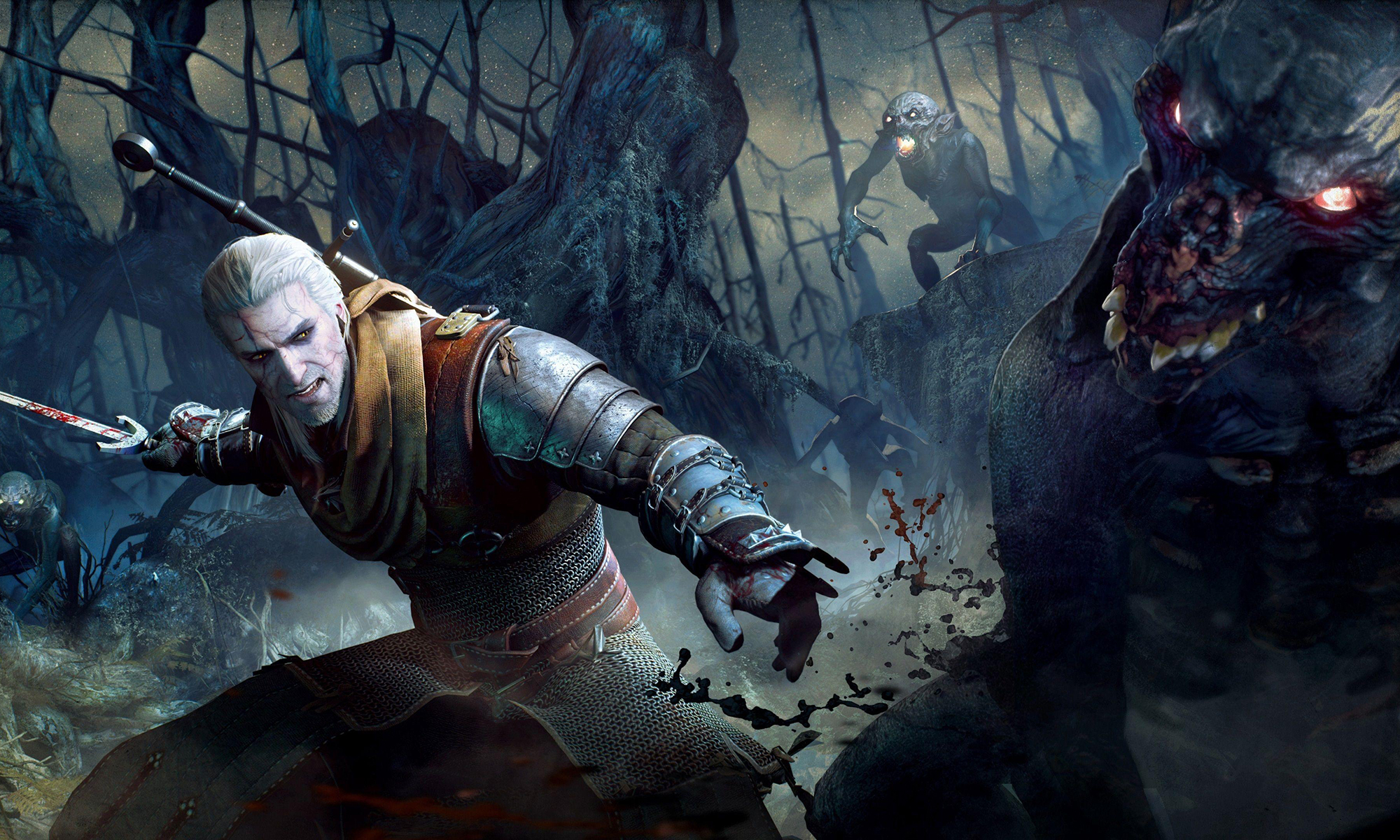
The art of storytelling in games witnessed a remarkable narrative tour de force with The Witcher series, helmed by CD Projekt Red. Borne from the intricate and captivating world of Andrzej Sapkowski's books, the series successfully translated this deep narrative into a gaming experience that enthralled millions.
- Adaptation of rich literature. The games plunged players into a world where moral ambiguity reigns supreme, and engaging characters like the charismatic Geralt of Rivia grapple with ethical dilemmas and epic adventures.
- Franchise expansion. The strength of the narrative didn't just spur one successful game but birthed a franchise, expanding over three major game releases. Each entry added new layers to the series' lore, further immersing players into the captivating universe.
- Media crossover. The narrative's influence also crossed the boundaries of the gaming medium, leading to a successful Netflix series, thus reaching a broader audience and further cementing the franchise's cultural impact.
The Last of Us

The industry-leading game studio Naughty Dog leveraged the power of storytelling to craft The Last of Us, a game celebrated for its ability to forge profound emotional connections.
- Character-driven plot. At the heart of the game is the harrowing journey of Joel and Ellie, two characters struggling to survive in a post-apocalyptic world. Their story is filled with personal struggle, sacrifice, and resilience, evoking a deep emotional response from players.
- Longevity. This emotional engagement ensures a lasting connection with the game. The powerful narrative and its poignant moments resonate with players, encouraging them to revisit the narrative long after the initial playthrough.
- Sequel success. The triumphant sequel, The Last of Us Part II, is a testament to this enduring emotional connection, which continued to explore and deepen the bond between Joel and Ellie, resonating with fans and critics alike.
Mass Effect series

BioWare's Mass Effect series takes player agency in storytelling to new heights, presenting a narrative experience that responds and evolves based on player choices.
- Narrative impact. Players are not merely spectators in the Mass Effect universe. They are active participants whose decisions can influence everything from a companion character's fate to intergalactic politics, thus creating unique narrative experiences.
- Character relationships. Choices aren't confined to plot progression; they also deeply impact relationships with non-playable characters. This adds emotional weight to decision-making, making every choice a potentially story-altering moment.
- Replayability. This level of narrative control and variability significantly enhances the game's replayability. Players can explore different narrative paths and outcomes on subsequent playthroughs, thus increasing engagement and extending the game's lifespan.
Compose a Storytelling Masterpiece with Game-Ace
A well-told story is a significant tool for creating immersive gaming experiences and driving commercial success. As a studio offering premium-quality game development services, Game-Ace understands the art and science of integrating compelling narratives into games. We have a team of experienced developers, writers, and designers ready to help you craft a gaming masterpiece that resonates with your audience and stands out in the market.
For a game that harnesses the power of storytelling to captivate, engage, and retain players, don't hesitate to contact us at Game-Ace. Let's start scripting your success story today.
 How to Design Learning Games That Teach Real-World Skills to Young Learners
How to Design Learning Games That Teach Real-World Skills to Young Learners  Level Up Learning: How Game-Based Learning Drives Real Results
Level Up Learning: How Game-Based Learning Drives Real Results  AI Game Assistant Integration for Smarter, Player-Responsive Games
AI Game Assistant Integration for Smarter, Player-Responsive Games  Beyond Reality: What Is a Simulation Game and Why It Matters Today
Beyond Reality: What Is a Simulation Game and Why It Matters Today  Proof of Concept Game: The First Step Toward a Full-Scale Game
Proof of Concept Game: The First Step Toward a Full-Scale Game 












